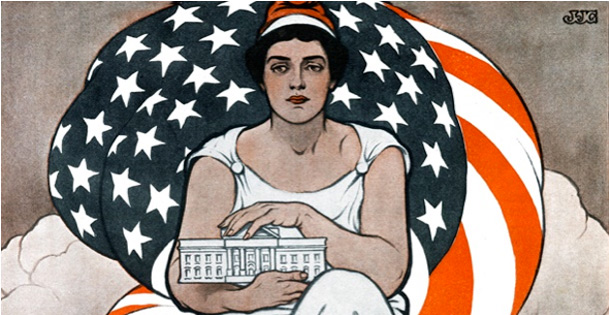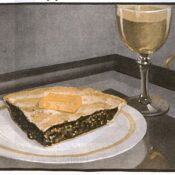Did you know that June 14 is designated as Flag Day because on that date the resolution describing the flag was adopted? Here are ten questions about the history, composition, and proper display of Old Glory. Answers are at the bottom. (Quiz originally published June 15, 1946.)
- By what body was the flag resolution adopted?
- The Continental Congress
- The Constitutional Convention
- Joint session of both Houses of Congress
- In what year was it adopted?
- 1774
- 1777
- 1793
- Who designed the present form of the American flag?
- Timothy Pickering
- Betsy Ross
- Samuel Reid
- The blue part of the flag, without the stars, is called the field. Give two names for it after the stars have been added.
- The 48 stars are arranged in:
- Six horizontal rows of eight stars
- Eight horizontal rows of six stars
- Is there a Federal law against having gold fringe on the flag?
- Who wrote the poem that gives significance to the title of this quiz?
- If the flag is displayed over a street running north and south, the field should be at
- East side
- West side
- Who wrote the pledge of allegiance to the flag?
- Dolly Madison
- Robert Baden-Powell
- Francis Bellamy
- The following are among the days on which the flag should be displayed.* Name the days.
- February 12
- February 22
- April 6
- May 30
- September 27
- November 11
Answers: 1. a. 2. b. 3. c. 4. union, canton. 5. a. 6. No. 7. Francis Scott Key (Star-Spangled Banner). 8. a. 9. c. 10. Lincoln’s birthday, Washington’s birthday, Army Day, Decoration Day (now called Memorial Day), Constitution Day, Columbus Day, Navy Day, Armistice Day*
*Since this quiz was published in 1946, the number of days that the flag should be displayed has changed. The current list of days, according to the U.S. Code, includes New Year’s Day (January 1); Inauguration Day (January 20); Martin Luther King Jr.’s birthday (third Monday in January); Lincoln’s Birthday (February 12); Washington’s Birthday (third Monday in February); National Vietnam War Veterans Day (March 29); Easter Sunday (variable); Mother’s Day (second Sunday in May); Armed Forces Day (third Saturday in May); Memorial Day (half-staff until noon —last Monday in May); Flag Day (June 14); Father’s Day (third Sunday in June); Independence Day (July 4); National Korean War Veterans Armistice Day (July 27); Labor Day (first Monday in September); Constitution Day (September 17); Columbus Day (second Monday in October); Navy Day (October 27); Veterans Day (November 11); Thanksgiving Day (fourth Thursday in November); Christmas Day (December 25); and such other days as may be proclaimed by the President of the United States; the birthdays of States (date of admission); and on State holidays.
Become a Saturday Evening Post member and enjoy unlimited access. Subscribe now



